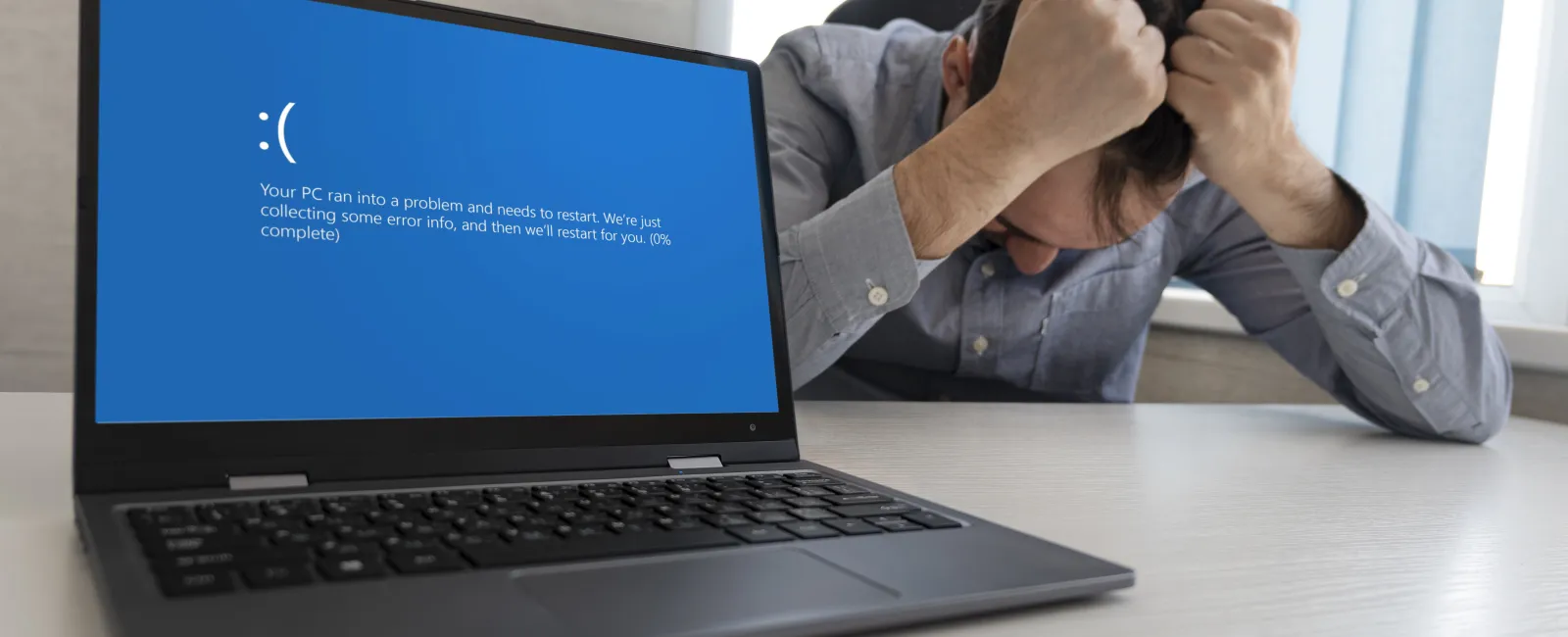September 23, 2024
When 8.5 Million Windows Devices Crashed: A Wake-Up Call for Businesses
On July 19, 2024, 8.5 million Windows devices, including those used by airlines, banks, and hospitals, suddenly displayed the dreaded "Blue Screen of Death." Panic ensued, with many fearing a cyber-attack. Fortunately, it wasn't a cyber-attack, but the real cause of this massive outage is equally alarming and should concern every business owner.
What Exactly Happened?
On that fateful day, millions of Windows devices experienced an endless reboot cycle and an unresolvable blue screen, causing global chaos. Airlines were forced to ground flights, stranding thousands of passengers at airports and leaving them unable to book new routes. Electronic health records went offline, leading to the cancellation or delay of non-emergency medical procedures, surgeries, and visits. Major banks also faced outages, preventing customers from accessing their accounts. These disruptions were part of what is now considered the largest IT outage in history, evoking memories of Y2K fears.
If It Wasn't a Cyber-Attack, What Caused It?
While initial speculation pointed to a cybersecurity attack, the actual culprit was a botched software update from CrowdStrike, a leading cybersecurity firm. The issue originated from a routine sensor update for their Falcon endpoint detection and response (EDR) platform. This update, specifically for Microsoft Windows, contained an undetected flaw. Due to its deep integration with the Windows OS, the flawed update caused widespread system crashes.
How could a multibillion-dollar organization release such a flawed update? Representatives from CrowdStrike later revealed that a gap in their testing software was to blame. The content validator tool failed to detect the issue, leading engineers to believe the update was safe for release. As a result, the update forced Windows systems into an endless reboot cycle, displaying the infamous Blue Screen of Death.
CrowdStrike acted swiftly to fix the issue, but the damage had already been done. Insurers now estimate that the outage will cost US Fortune 500 companies upwards of $5.4 billion.
Why Should This Concern You?
This incident underscores the critical role technology plays in our lives and highlights the far-reaching impact a single software flaw can have on global IT infrastructure. Here are three key takeaways for your business:
1. Reliable IT Management: Even large organizations like CrowdStrike can make mistakes. Having a knowledgeable IT professional manage your network can significantly reduce the risk of such issues. An experienced IT team can ensure smooth operations by staying updated, performing regular backups, and maintaining constant vigilance.
2. Rigorous Software Testing: A reliable IT team should handle thorough software testing to catch potential issues before they escalate.
3. Robust Disaster Recovery Plan: Mistakes are inevitable, but a robust disaster recovery plan can help you take swift action and mitigate damage. Many organizations affected by the outage had to pause operations because they lacked a disaster recovery plan. Don't be caught without a Plan B.
Take Action Now
Don't wait for a crisis to hit before taking action. Ensure your business is prepared by partnering with an experienced IT team. We offer a FREE, no-obligation call with our CEO to evaluate your current systems, identify potential vulnerabilities, and develop a comprehensive plan to safeguard your business against future outages. Your company's security and continuity depend on it.
Call us at 201-719-7000 or click here to book your FREE Call with Our CEO today!




